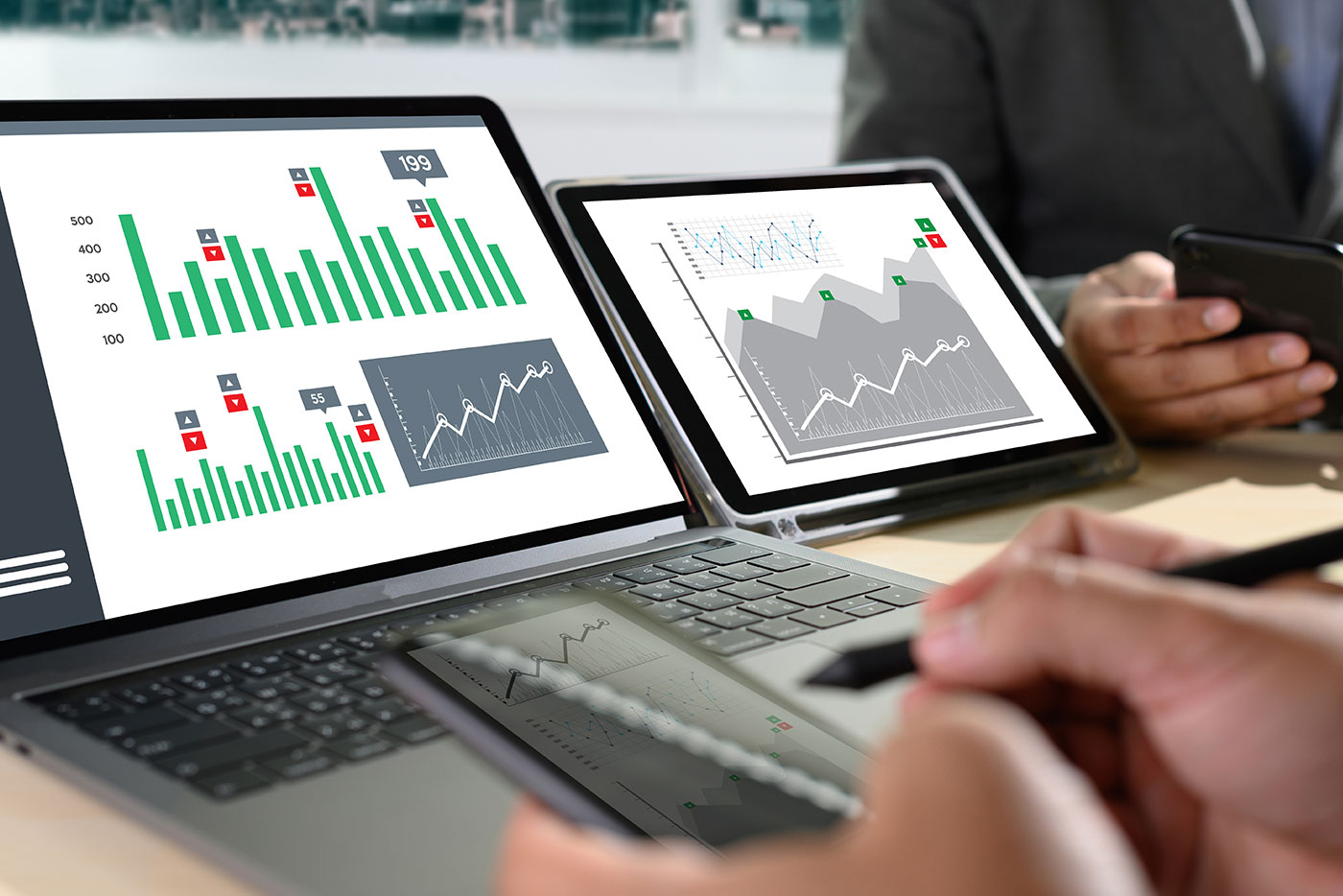Building and managing a successful online eCommerce store requires an understanding of your target market as well as a deeper understanding of digital marketing tactics and techniques that are most popular today. From developing a mobile-friendly and responsive website to showcasing your products and garnering the trust of prospective customers, establishing your eCommerce storefront and online presence requires the right tricks, tips, and tools.
Learning how to add Google Analytics to Shopify is one of the quickest ways to take your online presence to the next level, whether your goal is to amass a large online following or if you are more interested in generating leads, sales, and ultimately, revenue for your business and store itself.
Why Use Shopify as Your ECommerce Platform of Choice?
Using Shopify is one of the best ways to build an online eCommerce store, even if you are new to online retail or if you have no digital marketing experience yourself. When launching a brand new online store, programming the mechanics of the eCommerce store you require yourself will require extensive programming and coding knowledge or the assistance of a hired professional contractor.
With the use of Shopify, it is possible for just about anyone to build a beautiful, modern, responsive eCommerce site while also easily implementing Google Analytics to Shopify within just a few minutes. Here is an example of an elegant Shopify website:

What is Google Analytics and Why is it Useful?
Google Analytics is a free service for digital marketers available from Google itself. With Google Analytics, users have the ability to harvest, collect, and monitor incoming data as well as real-time live data on their own websites with each visitor their website receives. Anyone using Google Analytics on their own website, blog, or eCommerce store will have the ability to keep track of the number of page impressions, unique visitors, as well as the overall flow of traffic on the site itself at all times.
Google Analytics provides users with real-time reports on web traffic as well as traffic heat maps, keyword, and search results, as well as traffic flow reports to determine which pages and which content or products you have on your website are the most popular among your online visitors.
Using Google Analytics on your own Shopify store is one of the best ways to gain valuable insight into the way others view your website and browse it in order to search and discover products and services that are most relevant to you. Once you place a Google Analytics code Shopify into your store, you can immediately begin tracking data in real-time. Using real-time tracking services provided by Google Analytics is also a way for you to learn more about what times your website is most populated and why.
You can also use Google Analytics to Shopify eCommerce stores to learn more about which products of yours are trending as well as which advertising campaigns and digital marketing strategies of yours are currently working the best for you (based on goals and targets you have set). Whether you are interested in driving traffic to your eCommerce store via social media campaigns or if you have launched standard PPC, or pay-per-click campaigns to promote your eCommerce brand, you can track the results of individual leads and campaigns easily once you learn how to add Google Analytics to Shopify website.
Track Web Visitors and Ongoing Traffic
Once you add Google Analytics to Shopify, the Google Analytics script will immediately begin collecting, storing, and organizing data for you. Logging into your Google Analytics will instantly provide you with a dashboard and overview of the performance of your website as well as the overall traffic and exposure you are receiving. For example:
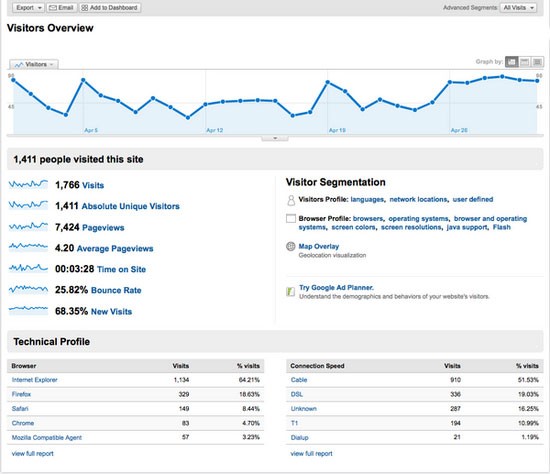
(Image Credit: Alternate Image)
After you are logged into your Google Analytics and viewing your eCommerce store’s dashboard, you can begin to dive deeper into the number of page views, impressions, and visitors you are receiving.
With Google Analytics, it is also possible to monitor the traffic flow as well as the overall impressions of your eCommerce storefront or website with a specific range of dates in mind. Setting the date(s) you intend to track is one of the quickest ways to determine what pages and promotions are working best to drive traffic to your online store and to deliver results.
Learn More About the Flow of Traffic
Another reason to add Google Analytics to Shopify is that you will quickly begin learning more about the flow of traffic on your eCommerce store and what visitors are most interested in on your site.
Not only does Google Analytics provide an in-depth overview of the number of page views and impressions you receive, but you will also discover how visitors are accessing your website and what pages, products, and links they are clicking on while they are there.
You Might Also Like
Spend time reviewing data on how users are navigating your website, which links are drawing the most attention, and which products are generating the most clicks, leads, or “Add to Cart” engagements. With Google Analytics, you can learn significantly more about the performance of your eCommerce store with the Shopify platform than with standard data collectors and scripts. For instance:
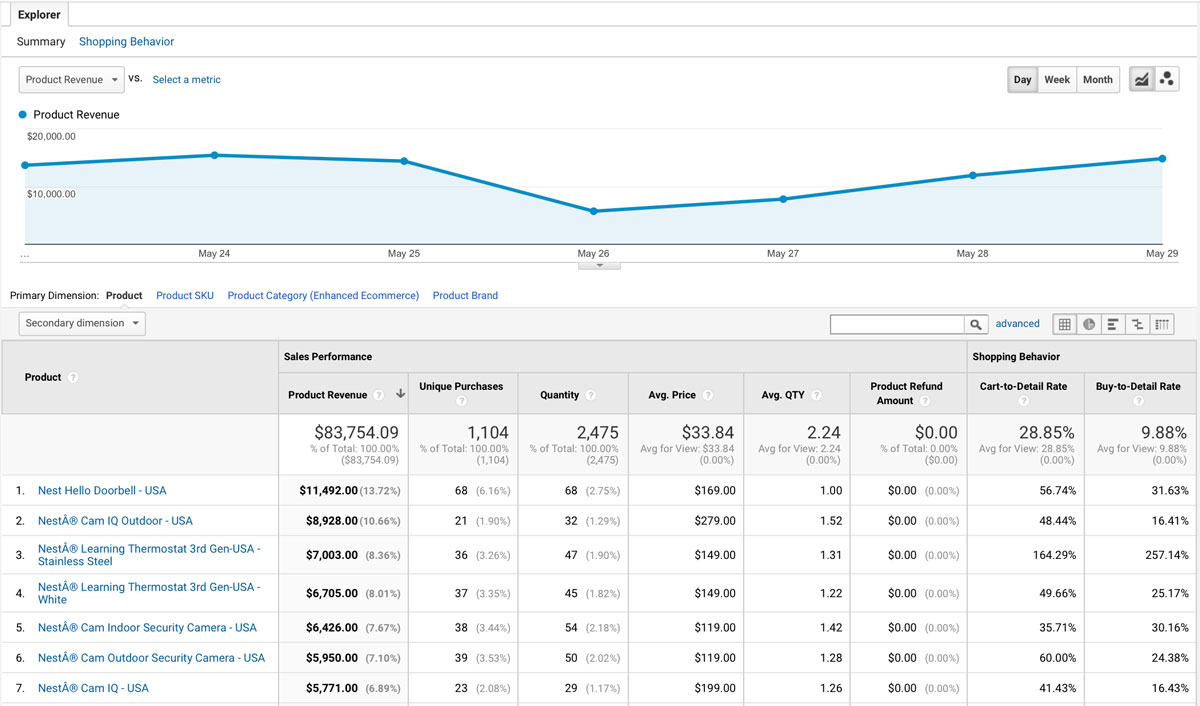
(Image Credit: Disruptive Advertising)
Understanding the traffic maps of your website can come in handy when launching redesigns and ensuring that all of your products and important links are visible from your storefront’s homepage. The more familiar you become with the overall flow of your website, the easier it is to direct visitors where you want them to go and what page(s) and product(s) you want them to learn more about and see.
With the use of Google Analytics, save time spent tracking data in real-time with easy to download and save PDF files and alternative formats of the data reports you collect with your Google Analytics script and account.
Understand your Google Analytics + test your SEO in 60 seconds!
Diib easily syncs with Google Analytics and then uses the power of big data to help you quickly and easily increase your traffic and rankings. We’ll even let you know if you already deserve to rank higher for certain keywords. As seen in Entrepreneur!
- Easy-to-use automated SEO tool
- Keyword and backlink monitoring + ideas
- Speed, security, + Core Vitals tracking
- Intelligently suggests ideas to improve SEO
- Over 500,000 global members
- Built-in benchmarking and competitor analysis
Used by over 500k companies and organizations:
Syncs with 
Study Keywords and Track Relevant Trends
Having Google Analytics code Shopify in place is a way to also gauge which keywords and trends are most relevant to your business and the type of customers or clients you want to appeal to and attract. You can use Google Analytics to discover just how users have found your eCommerce store and whether they were referred to your storefront with the use of a third-party link and referral, or if they simply searched for a relevant keyword or trend using a well-known search engine.
The more optimized your Shopify storefront and website is for search engines such as Google, Yahoo!, DuckDuckGo, and Bing, the easier it is to maximize your visibility and potential to reach more visitors and prospective customers or clients. Using Google Analytics is a great way to determine which keywords, phrases, and even “long-tail keywords” are being utilized by visitors to find your website and the products or services you currently have for sale.
After you add Analytics to Shopify, you can then begin to track which products, services, or pieces of content are performing the best based on current market trends as well as keywords and phrases you are targeting and honing in on with your blogging and digital marketing strategies and campaigns. Use Google Analytics to keep an eye on upcoming and current trends that are most relevant to your own storefront while also using Google Trends in conjunction to ensure you are on the right track with the future planning for your store.
With Google Trends alongside Google Analytics, you will never feel in the dark again when it comes to researching popular trends and keywords that are most relevant to your niche and most likely to resonate with your intended audience. THe image below shows an example of Google Trends:
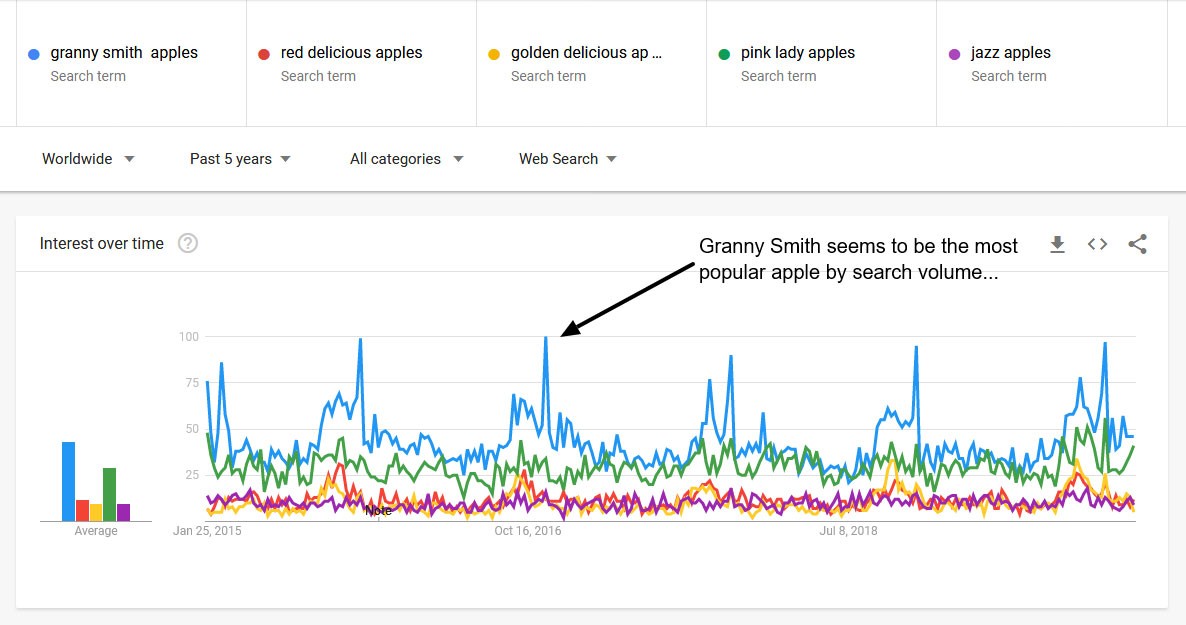
(Image Credit: Petra Manos)
Use Real-Time Tracking to Monitor the Success of Individual Campaigns
Using real-time tracking to monitor the sales and traffic of your Shopify storefront as well as individual marketing campaigns you launch is a way to stay on top of your advertisements while also staying in touch with your prospective audience. With real-time tracking, monitor the live visitors on your website, their locations, as well as what page(s) they are currently on and visiting.
Once properly configured to work with your Shopify account, you can also implement plugins to track which visitors have products in their online carts, an account with your shop, or those who have even visited your Shopify website in the past.
Learn How to Correctly Launch Geo-Targeted Campaigns
Even after you add Analytics to Shopify, there are plenty of features and functions to explore, including in-depth geo-targeting. Regardless of the target demographics or audience you have in mind for your eCommerce store, Google Analytics makes it easier than ever to keep up with where your visitors are coming from and who is buying from you. For example:
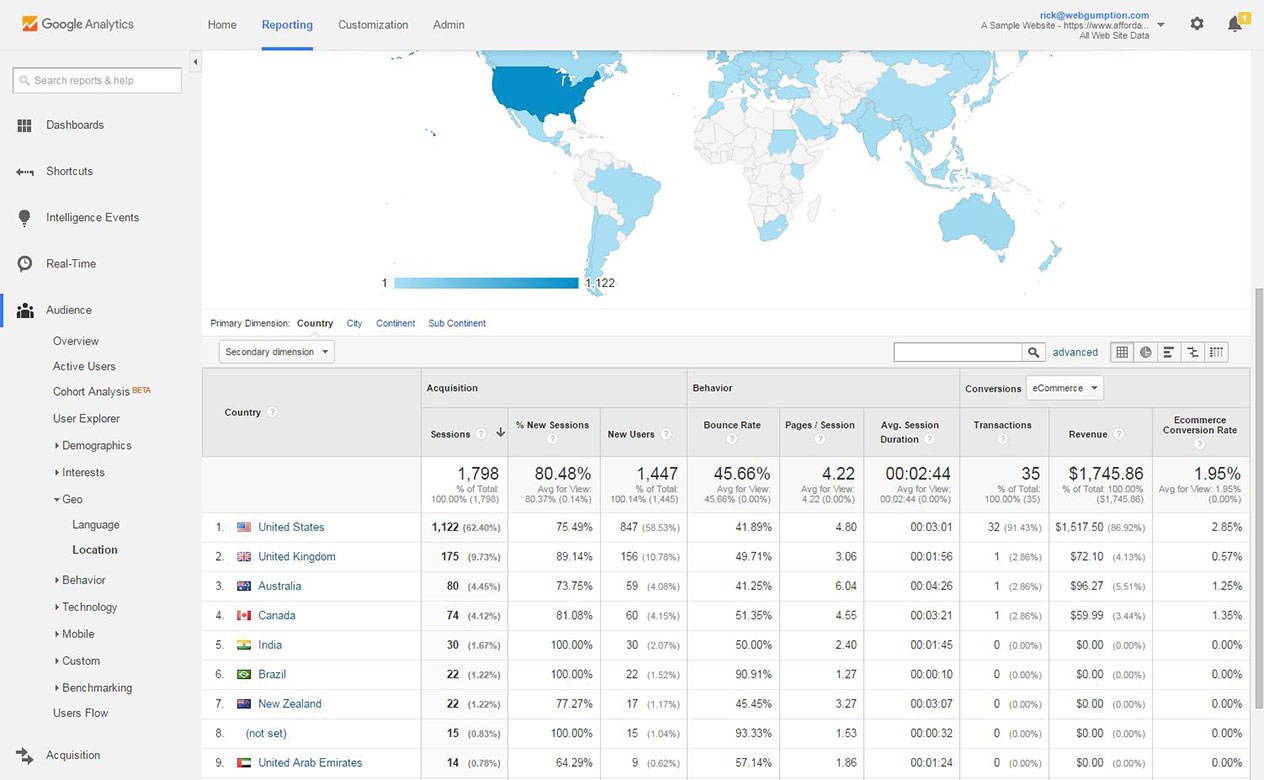
(Image Credit: Learn Digital Advertising)
Gathering geographic targeting information about your online visitors is extremely valuable, especially if you are looking to market the products or services you sell to a highly targeted or niche market. The more you know about who is interested in your products and your eCommerce brand, the more likely you are to launch a highly successful campaign that delivers the results and sales you need.
Track Digital Marketing Campaigns With Google Analytics
You can also use real-time and long-term tracking with the use of Google Analytics to monitor online campaigns, social media marketing posts, or ads that you launch to determine the overall effectiveness of each. Integrating your Shopify account with Google Analytics is one of the most efficient methods of keeping track of campaigns as well as incoming links from external websites, sponsored posts, and paid ads.
Tracking incoming traffic sources and monitoring referrals over time is a great way to determine the source of your traffic as well as why users may be visiting your website and storefront in the first place. Do your campaigns drive users to your website based on your sale price, jargon, or visuals?
Are you attracting the most visitors from PPC ads, social media, or even from an external blog or third-party website? These metrics are extraordinarily valuable when it comes to building a brand and a sense of community around your brand and the eCommerce business you represent.
We hope that you found this article useful.
If you want to know more interesting about your site health, get personal recommendations and alerts, scan your website by Diib. It only takes 60 seconds.
Use A/B Testing With Google Analytics
Another way to put Google Analytics to work for you is to integrate A/B testing with your account as well as your Shopify storefront itself. A/B testing is the process of testing the overall performance of an ad set or campaign based on specific factors such as visuals used, CTA (call-to-action), as well as overall messaging.
Whenever you launch an online campaign with the use of services such as Google Ads or social media, tracking the performance of individual ads can come in handy for many reasons. Saving on your overall advertising budget while also honing in on highly targeted audiences can help to ensure the best performance possible for each of your launched campaigns.
With the use of Google Analytics in conjunction with multiple ads sets you launch, learn how to better reach your targeted audience and how to appeal to the demographics who are most likely to have a genuine need for your products or services.
Using A/B testing can help you to avoid overspending as you learn which types of ads and campaigns drive traffic to your website as well as your Shopify storefront based on your preferred marketing platforms. Here is what an A/B test on Google Analytics can look like:
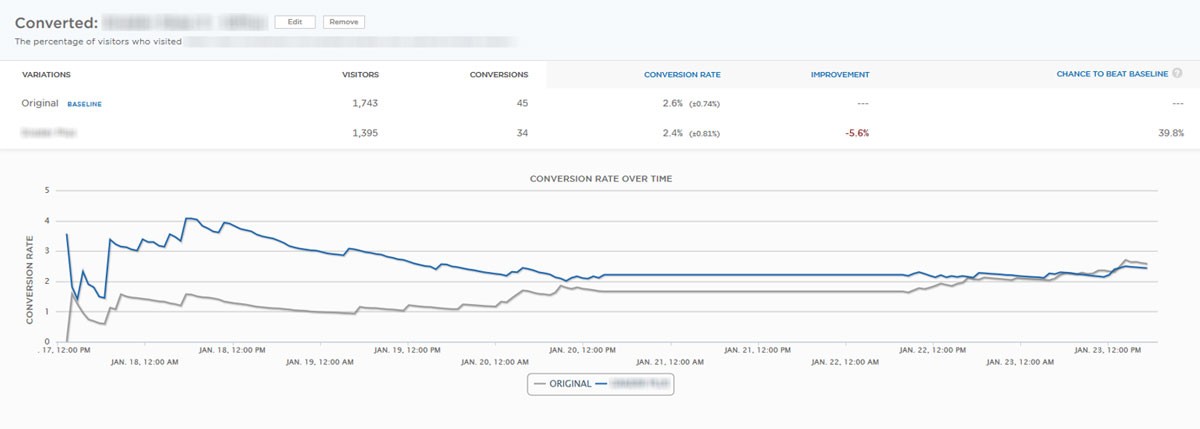
(Image Credit: Crazy Egg)
Use Google Analytics to Create a Working Content Strategy
Developing a working content strategy is imperative for any business or brand with an online presence, especially an eCommerce storefront. With today’s highly competitive eCommerce marketplace, standing out from your competition and establishing your brand as authoritative, trustworthy, and reputable is essential to gain traction and for any potential future success.
Without a working content strategy, visitors on your website may find it difficult to place their trust in your business and brand, especially if they were previously unaware of its existence prior to their visit to your store. By having an active blog and an ongoing content marketing strategy in place, build trust among your online followers as you encourage others to help spread the word about your eCommerce storefront as well as the products or services you provide.
You can use Google Analytics to track keywords that have been searched in order to find your website or your store’s products to help brainstorm content topics and subject matter that is most appropriate for your audience. While reviewing the data of your Google Analytics account, take notice of keywords and phrases that are most often used in finding your website to help get the direction you need to get started with your own content marketing strategy.
Use your content marketing strategy to help attract new visitors who are seeking information or who are interested in learning about a topic that is relevant to the types of products or services you offer.
Once you have established a content marketing strategy and you begin sharing your content via email newsletters, PPC ads, and even social media, you can track all of the results and performance metrics of your content using Google Analytics. Monitor the overall performance of each piece of content you create, publish, and promote to determine what type of messaging works best to reach your audience and what type of content garners the most engagement when it comes to generating leads, sales, and ultimately, revenue for your Shopify store.
Benefits of Google Analytics for Shopify
Using Google Analytics with your own Shopify storefront is one of the fastest ways to learn more about the market you are targeting and the niche you represent. Some of the most notable benefits of integrating Google Analytics with a Shopify storefront account include:
- Real-time tracking: Use real-time tracking to track visitors live after launching campaigns, during promotions, and even during peak performance hours.
- Geo-targeting: Use Google Analytics for geo-targeting to hone in on specific users with your digital campaigns.
- A/B testing: Put A/B testing to work for you to find out what method of marketing is most likely to render you the results you desire for your Shopify store.
- Traffic flow: Monitor and track the traffic flow of your storefront to ensure that your navigation is easily accessible and that your website is responsive and properly designed.
Learning how to add Google Analytics to Shopify website and eCommerce store is extremely beneficial when you are building a brand from the ground up or if you are searching for ways to build credibility and establish your business as an authoritative source. With Google Analytics, an understanding of your target audience, and a willingness to monitor and track data to make changes for the future of your eCommerce store, maximize your sales and the number of leads and followers you receive on a daily basis.
Diib®: GA Statistics to Boost Your Shopify Sales!
Diib Digital integrates with your Shopify Google Analytics, bringing you customized statistics that will allow you to make strategic decisions for your site. Here are some of the key features of our User Dashboard that set us apart from the crowd:
- Bounce rate monitoring and repair
- Google Analytics integration, including plugins
- Broken pages where you have backlinks (404 checker)
- Keyword, backlink, and indexing monitoring and tracking tools
- User experience and mobile speed optimization
- Technical SEO monitoring
Click here for your free scan or simply call 800-303-3510 to speak to one of our growth experts.
FAQ’s
Adding Google Analytics to your Shopify store is free and can be so helpful in learning the behavior and buying decisions of your customers.
Here are the steps you’ll want to take:
- Open your Shopify admin.
- Go to Online store > Preferences.
- In the Google Analytics section, click the Use Enhanced Ecommerce checkbox.
- Click Save.
- In your Google Analytics account, click Admin.
- In the View column, click Ecommerce Settings.
According to Shopify, these are the steps:
- Install Google Tag Manager to get the code snippets that you will need to copy and paste into your Shopify store.
- In your Shopify admin, click Online store, and then click Themes.
- In the theme drop-down, click Edit Code.
- Copy the first code snippet from Google Tag Manager into the <head> tags of your theme.
Yes, your customers will receive a customized email with a tracking number and order status page link. Once they’ve clicked on the tracking number, they will see the tracking details.
Google Analytics is a free service, however, if you want more advanced features, you’ll need to pay a recurring fee depending on what your needs are.
